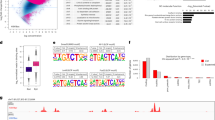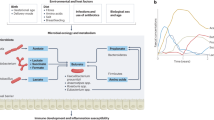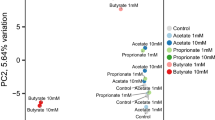Abstract
Circulating short-chain fatty acids (SCFAs) are primarily derived from bacterial fermentation of carbohydrates in the colon where they function as physiologic modulators of epithelial cell maturation. Butyrate has been shown to induce tyrosine hydroxylase, the rate-limiting enzyme of catecholamine synthesis, and enkephalin neuropeptide gene transcription, suggesting a role in perinatal sympathoadrenal stress-adaptation. We sought to determine whether there were SCFA structural requirements for this effect. Nine biologically relevant SCFAs and butyrate derivatives were tested in an in vitro model (PC12, rat pheochromocytoma cells) for their ability to regulate neurotransmitter-related gene expression. Our results revealed that among all the studied SCFAs, only propionate and butyrate increased tyrosine hydroxylase and proenkephalin mRNA levels. The functional activity was selective to the carbon atom chain length and associated with the presence of an ethyl moiety in the carbon atom backbone chain. Modifications or absence of this domain affected the gene induction response, suggesting a receptor-mediated mechanism(s). Moreover, propionate, butyrate, and the drug 4-phenyl-butyrate were each shown to regulate transmitter genes via at least three independent mechanisms: histone hyperacetylation, cAMP signaling, or peroxisome proliferator-activated receptor gamma–mediated pathways. Thus, the biologic impact of SCFAs on catecholaminergic and opioid systems depend on the activation of SCFA-specific, dose-specific, and gene-specific molecular mechanisms. We speculate that 1) circulating levels of SCFAs may influence sympathoadrenal transmitter biosynthesis and hence whole animal stress-adaptive responsiveness after birth, and 2) the adverse effects of antibiotics on delayed acquisition of postnatal gut flora may affect this apparent evolutionary advantage of gut colonization.
Similar content being viewed by others
Log in or create a free account to read this content
Gain free access to this article, as well as selected content from this journal and more on nature.com
or
Abbreviations
- ppEnk:
-
preproenkephalin
- TH:
-
tyrosine hydroxylase (EC 1.14.16.2)
- PC12:
-
rat pheochromocytoma
- SCFA:
-
short-chain fatty acids
- SB:
-
sodium butyrate
- PKA:
-
protein kinase A
- PPAR:
-
peroxisome proliferator-activated receptor
- RT-PCR:
-
reverse transcriptase-PCR
- HDAC:
-
histone deacetylase
- TSA:
-
trichostatin A
- 4-PB:
-
phenylbutyrate
- 2-HB:
-
2-hydroxybutyrate
- 3-HB:
-
3-hydroxybutyrate
- RXR:
-
retinoid X receptor
- PPRE:
-
peroxisone proliferator response element
- PMSF:
-
phenylmethyl sulfenylfluoride
References
Slotkin TA 1985 Development of the Sympathoadrenal Axis. Humana Press, New York, 69–96.
Sabban EL 1997 Control of tyrosine hydroxylase gene expression in chromaffin and PC12 cells. Semin Cell Dev Biol 8: 101–111.
Weisinger G 1995 The transcriptional regulation of the preproenkephalin gene. Biochem J 307: 617–629.
DeCristofaro JD, LaGamma EF 1994 Neonatal stress: effects of hypoglycemia and hypoxia on adrenal tyrosine hydroxylase gene expression. Pediatr Res 36: 719–723.
Kumer SC, Vrana KE 1996 Intricate regulation of tyrosine hydroxylase activity and gene expression. J Neurochem 67: 443–462.
Hamill RW, Gamma EFL 1992 Autonomic nervous system development. In: Bannister SR (ed) Autonomic Failure: A Textbook of Clinical Disorders of the Autonomic Nervous System. Oxford University Press, New York, 15–35.
Topping DL, Clifton PM 2001 Short-chain fatty acids and human colonic function: roles of resistant starch and nonstarch polysaccharides. Physiol Rev 81: 1031–1064.
Lau C, Ross LL, Whitmore WL, Slotkin TA 1987 Regulation of adrenal chromaffin cell development by the central monoaminergic system: differential control of nor-epinephrine and epinephrine levels and secretory responses. Neuroscience 22: 1067–1075.
Nankova BB, Chua J, Mishra R, Kobasiuk CD, La Gamma EF 2003 Nicotinic induction of preproenkephalin and tyrosine hydroxylase gene expression in butyrate-differentiated rat PC12 cells: a model for adaptation to gut-derived environmental signals. Pediatr Res 53: 1–6.
Greene LA, Tischler AS 1976 Establishment of a noradrenergic clonal line of rat adrenal pheochromocytoma cells which respond to nerve growth factor. Proc Natl Acad Sci USA 73: 2424–2428.
Nankova B, Kvetnansky R, McMahon A, Viskupic E, Hiremagalur B, Frankle G, Fukuhara K, Kopin IJ, Sabban EL 1994 Induction of tyrosine hydroxylase gene expression by a nonneuronal nonpituitary-mediated mechanism in immobilization stress. Proc Natl Acad Sci USA 91: 5937–5941.
Yoshikawa K, Williams C, Sabol SL 1984 Rat brain preproenkephalin mRNA: cDNA cloning, primary structure, and distribution in the central nervous system. J Biol Chem 259: 14301–14308.
Gottlicher M, Widmark E, Li Q, Gustafsson JA 1992 Fatty acids activate a chimera of the clofibric acid-activated receptor and the glucocorticoid receptor. Proc Natl Acad Sci USA 89: 4653–4657.
Storer G, Trimble R, Illman RJ, Snoswell A, Topping D 1983 Effects of dietary oat bran and diabetes on plasma and caecal volatile fatty acids in the rat. Nutr Res 3: 519–526.
Byrd JC, Alho H 1987 Differentiation of PC12 pheochromocytoma cells by sodium butyrate. Brain Res 428: 151–155.
Lewis EJ, Tank AW, Weiner N, Chikaraishi DM 1983 Regulation of tyrosine hydroxylase mRNA by glucocorticoid and cyclic AMP in a rat pheochromocytoma cell line: isolation of a cDNA clone for tyrosine hydroxylase mRNA. J Biol Chem 258: 14632–14637.
Ebert SN, Lindley SE, Bengoechea TG, Bain D, Wong DL 1997 Adrenergic differentiation potential in PC12 cells: influence of sodium butyrate and dexamethasone. Brain Res Mol Brain Res 47: 24–30.
Gore SD, Carducci MA 2000 Modifying histones to tame cancer: clinical development of sodium phenylbutyrate and other histone deacetylase inhibitors. Expert Opin Investig Drugs 9: 2923–2934.
LaGamma EF, Adler JE, Black IB 1984 Impulse activity differentially regulates Leuenkephalin and catecholamine characters in the adrenal medulla. Science 224: 1102–1104.
Hinnebusch BF, Meng S, Wu JT, Archer SY, Hodin RA 2002 The effects of short-chain fatty acids on human colon cancer cell phenotype are associated with histone hyperacetylation. J Nutr 132: 1012–1017.
Huang N, Katz JP, Martin DR, Wu GD 1997 Inhibition of IL-8 gene expression in Caco-2 cells by compounds which induce histone hyperacetylation. Cytokine 9: 27–36.
Fusunyan RD, Quinn JJ, Fujimoto M, MacDermott RP, Sanderson IR 1999 Butyrate switches the pattern of chemokine secretion by intestinal epithelial cells through histone acetylation. Mol Med 5: 631–640.
Yoshida M, Kijima M, Akita M, Beppu T 1990 Potent and specific inhibition of mammalian histone deacetylase both in vivo and in vitro by trichostatin A. J Biol Chem 265: 17174–17179.
Futamura M, Monden Y, Okabe T, Fujita-Yoshigaki J, Yokoyama S, Nishimura S 1995 Trichostatin A inhibits both ras-induced neurite outgrowth of PC12 cells and morphological transformation of NIH3T3 cells. Oncogene 10: 1119–1123.
Grimaldi PA 2001 Fatty acid regulation of gene expression. Curr Opin Clin Nutr Metab Care 4: 433–437.
Chawla A, Repa JJ, Evans RM, Mangelsdorf DJ 2001 Nuclear receptors and lipid physiology: opening the X-files. Science 294: 1866–1870.
Pineau T, Hudgins WR, Liu L, Chen LC, Sher T, Gonzalez FJ, Samid D 1996 Activation of a human peroxisome proliferator-activated receptor by the antitumor agent phenylacetate and its analogs. Biochem Pharmacol 52: 659–667.
Escher P, Braissant O, Basu-Modak S, Michalik L, Wahli W, Desvergne B 2001 Rat PPARs: quantitative analysis in adult rat tissues and regulation in fasting and refeeding. Endocrinology 142: 4195–4202.
Rosen ED, Spiegelman BM 2001 PPARgamma: a nuclear regulator of metabolism, differentiation, and cell growth. J Biol Chem 276: 37731–37734.
Quandt K, Frech K, Karas H, Wingender E, Werner T 1995 MatInd and MatInspector: new fast and versatile tools for detection of consensus matches in nucleotide sequence data. Nucleic Acids Res 23: 4878–4884.
Durkin RC, Weisinger G, Holloway MP, La Gamma EF 1992 Primary sequence of −1436 to +53 bp of the rat preproenkephalin gene putative Z-DNA and regulatory motifs. Biochim Biophys Acta 1131: 349–351.
Adamson DJ, Frew D, Tatoud R, Wolf CR, Palmer CN 2002 Diclofenac antagonizes peroxisome proliferator-activated receptor-gamma signaling. Mol Pharmacol 61: 7–12.
Brown AJ, Goldsworthy SM, Barnes AA, Eilert MM, Tcheang L, Daniels D, Muir AI, Wigglesworth MJ, Kinghorn I, Fraser NJ, Pike NB, Strum JC, Steplewski KM, Murdock PR, Holder JC, Marshall FH, Szekeres PG, Wilson S, Ignar DM, Foord SM, Wise A, Dowell SJ 2003 The orphan G protein-coupled receptors GPR41 and GPR43 are activated by propionate and other short chain carboxylic acids. J Biol Chem 278: 11312–11319.
Ginty DD, Glowacka D, Bader DS, Hidaka H, Wagner JA 1991 Induction of immediate early genes by Ca2+ influx requires cAMP-dependent protein kinase in PC12 cells. J Biol Chem 266: 17454–17458.
Le Poul E, Loison C, Struyf S, Springael JY, Lannoy V, Decobecq ME, Brezillon S, Dupriez V, Vassart G, Van Damme J, Parmentier M, Detheux M 2003 Functional characterization of human receptors for short chain fatty acids and their role in polymorphonuclear cells activation. J Biol Chem 278: 25481–25489.
Fitch MD, Fleming SE 1999 Metabolism of short-chain fatty acids by rat colonic mucosa in vivo. Am J Physiol 277:G31–G40.
Boffa LC, Lupton JR, Mariani MR, Ceppi M, Newmark HL, Scalmati A, Lipkin M 1992 Modulation of colonic epithelial cell proliferation, histone acetylation, and luminal short chain fatty acids by variation of dietary fiber (wheat bran) in rats. Cancer Res 52: 5906–5912.
Nafday SM, Green RS, Chauvin SN, Holzman IR, Magid MS, Lin J 2002 Vitamin A supplementation ameliorates butyric acid-induced intestinal mucosal injury in newborn rats. J Perinat Med 30: 121–127.
Braissant O, Foufelle F, Scotto C, Dauca M, Wahli W 1996 Differential expression of peroxisome proliferator-activated receptors (PPARs): tissue distribution of PPAR-alpha, -beta, and -gamma in the adult rat. Endocrinology 137: 354–366.
Park KS, Ciaraldi TP, Abrams-Carter L, Mudaliar S, Nikoulina SE, Henry RR 1997 PPAR-gamma gene expression is elevated in skeletal muscle of obese and type II diabetic subjects. Diabetes 46: 1230–1234.
de la Presa Owens S, Innis SM 1999 Docosahexaenoic and arachidonic acid prevent a decrease in dopaminergic and serotoninergic neurotransmitters in frontal cortex caused by a linoleic and alpha-linolenic acid deficient diet in formula-fed piglets. J Nutr 129: 2088–2093.
LaGamma EF, Chua J, Kobasiuk CD, Sabban EL, Evinger MJ 2000 Synergistic interaction between bacterial fermentation of dietary carbohydrate and postnatal maturation of the autonomic nervous system (ANS): a hypothesis on evolution of two animal kingdoms. Pediatr Res 47: 409A
Acknowledgements
The authors thank Ning Yuan (Regeneron Inc.) for the excellent technical assistance in some of the laboratory experiments.
Author information
Authors and Affiliations
Corresponding author
Additional information
Supported by institutional grants from the Children's Foundation of the Department of Pediatrics.
Rights and permissions
About this article
Cite this article
Mally, P., Mishra, R., Gandhi, S. et al. Stereospecific Regulation of Tyrosine Hydroxylase and Proenkephalin Genes by Short-Chain Fatty Acids in Rat PC12 Cells. Pediatr Res 55, 847–854 (2004). https://doi.org/10.1203/01.PDR.0000119365.21770.45
Received:
Accepted:
Issue date:
DOI: https://doi.org/10.1203/01.PDR.0000119365.21770.45
This article is cited by
-
Microbial short-chain fatty acids regulate drug seeking and transcriptional control in a model of cocaine seeking
Neuropsychopharmacology (2024)



